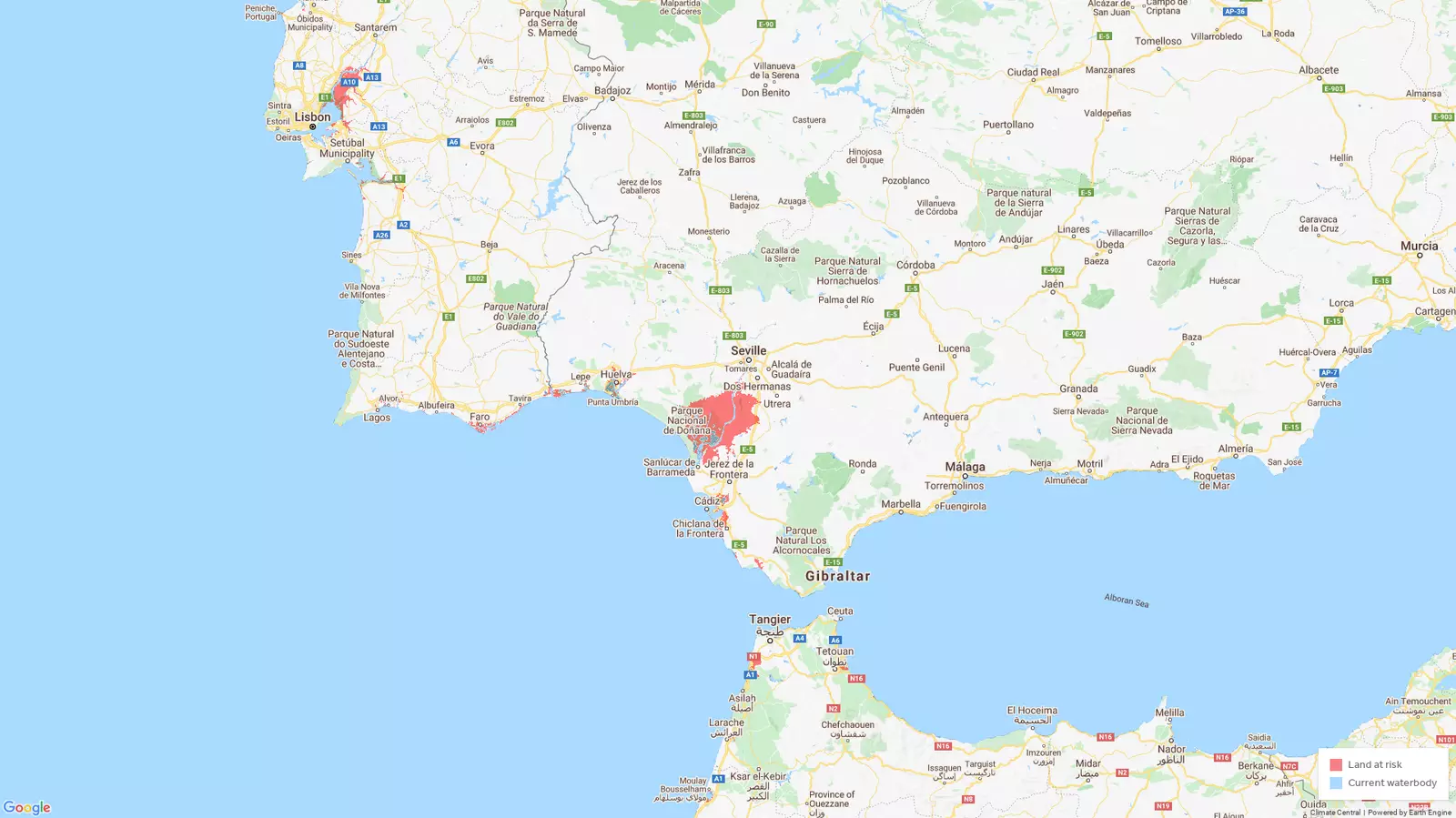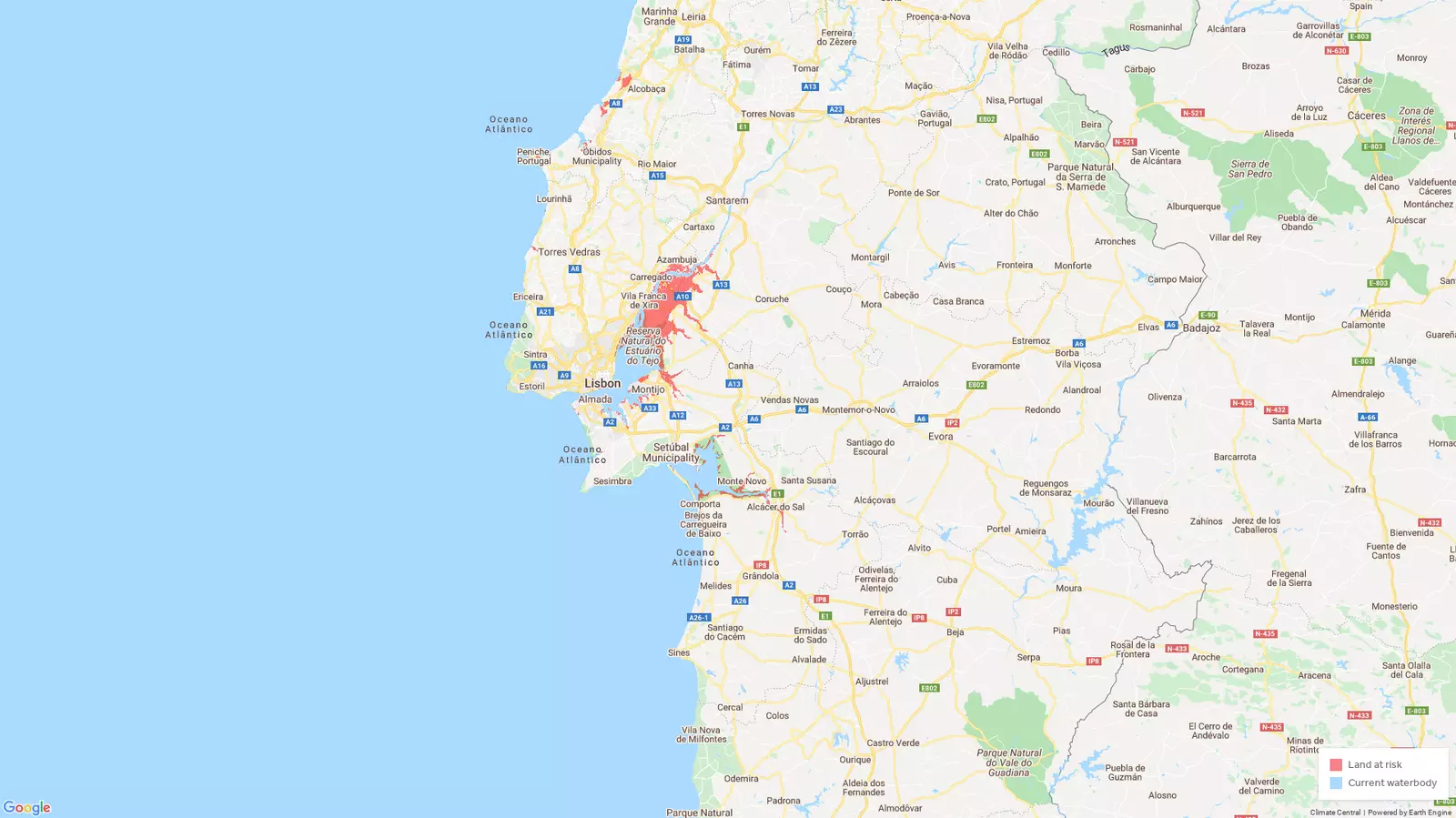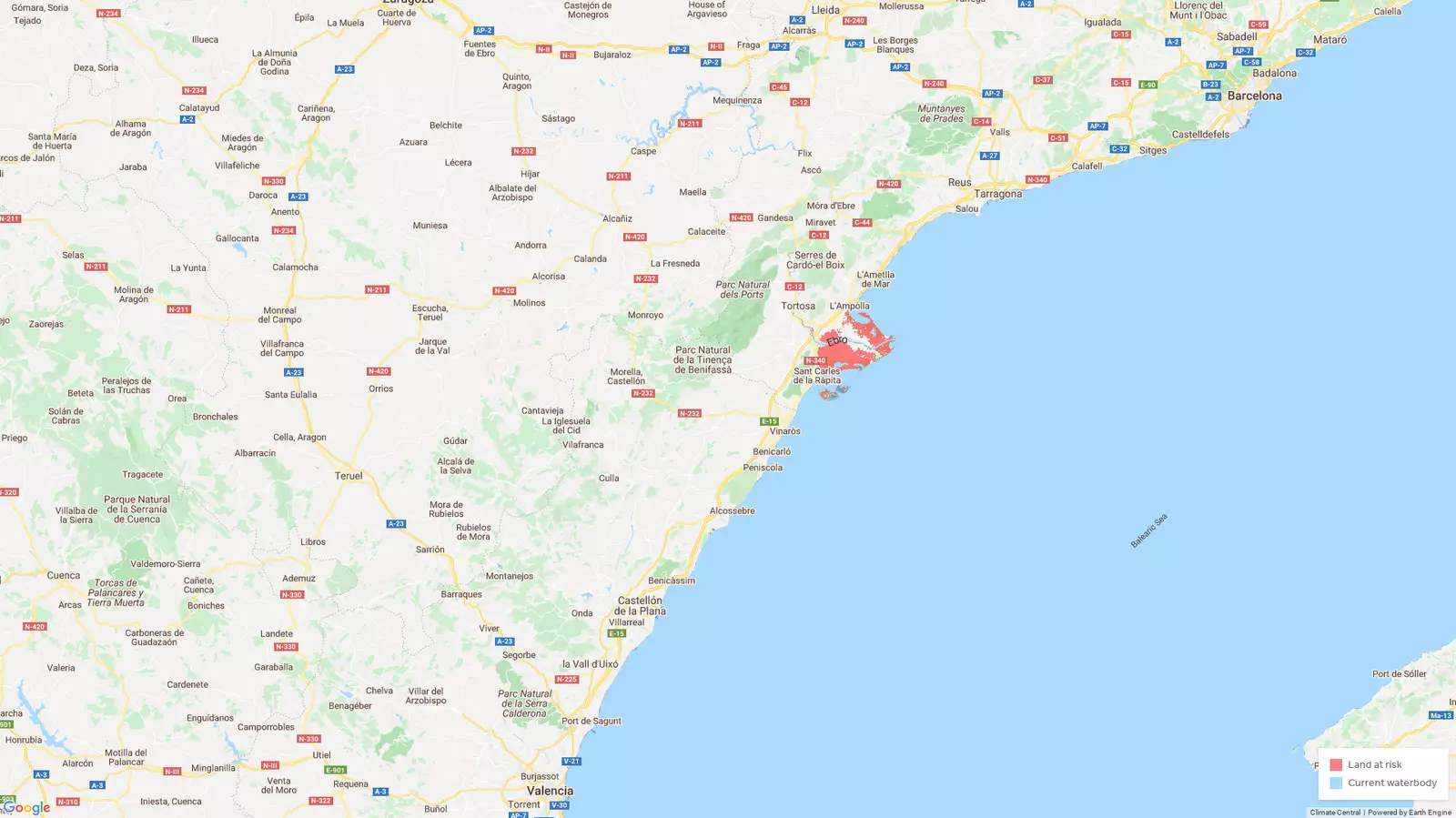
The south of Spain will be one of the areas most affected by the rising sea.
The sea level rose in the 20th century between 11 and 16 cm , but continues to do so at an unstoppable level. Even with immediate emission cuts it is estimated that the rise in this century will be 0.5 m more , that is, the increase in the 21st century it can reach two meters or exceed depending on the melting in the Arctic areas.
This is confirmed by the latest report published in the journal Nature Communications on October 29. According to data from the report, which has been carried out by Climate Central, the sea level would rise would affect, in most cases, to people who live in the coastal areas of Asia, with chronic and permanent floods, in countries like China, Indonesia, Thailand, Bangladesh or Vietnam.
But no country or city is spared from the ravages, there are also affected cities such as Lisbon, London, New York, Miami or Tokyo.
In total, they ensure this would harm about 300 million people in 2050 and more than 480 million people in 2100.

Lisbon would also be affected.
"We now understand that the threat of sea level rise and coastal flooding It's much bigger than we previously thought. e," says Benjamin Strauss, executive director of Climate Central and co-author of the study, which has taken three years to complete.
On the other hand, they also affirm that the consequences may be less if they manage to stop the consequences of climate change, although for now they do not have data in this regard. What's important to them is that this map can help those areas prepare for prolonged flooding, even though most are already working on retaining walls.
“Translating sea level projections into potential population exposure is critical to coastal planning and to assess the benefits of climate mitigation , as well as the costs of not acting,” notes the Nature Communications report.
And what about Spain ? Although it is true that this is not the only recent report that has evaluated the consequences of climate change in our country, the ** First scientific report on the impact of climate and environmental change in the Mediterranean, carried out by the network MedECC.**
In it, it was ensured that the Mediterranean would be one of the epicenters of global warming. As can be seen in the report, the Mediterranean has warmed 20% faster than the global average , which translates into more extreme droughts and permanent floods.
According to the Nature Communications report, Spain will also suffer the consequences of the greenhouse effect , the cause of the rise in temperature and global warming caused by human beings.
Climate Central shows in the map made how the sea level would rise in the Peninsula. On the one hand we can see the affected areas on the map, and on the other hand, how the rise in sea level will affect (also in other countries) the rise in sea level in the coming years. People living in coastal areas will experience regular flooding.

The Ebro Delta area would be like this in 2050.
The most affected areas are Ebro Delta , the area of Gulf of Roses , the north of Algeciras and Palmones , the beach of Pedro Valiente in Cadiz , much of barbate ; in addition to the entire coastal area from Conil to Trafalgar Lighthouse , and of The Port of Santa María to the Town of Sancti Petri , in Cadiz.
Likewise, the Odiel River and the Tinto River, affecting the Odiel Marshes Natural Area , the city of Huelva and surroundings, as well as the area of the broken , and the area of Guadiana River , including Ayamonte and the surrounding coastal area.
Above all, the entire area around the river is at risk of flooding. Guadalquivir , which includes the eastern part of the Doñana national park , and entire towns like Huerta Tejada Huerta, Minimal Island either marshmallows , reaching the risk as far as Coria del Río and even to the city of Seville.
